Feb 25, 2022
by Jessica MacDonald
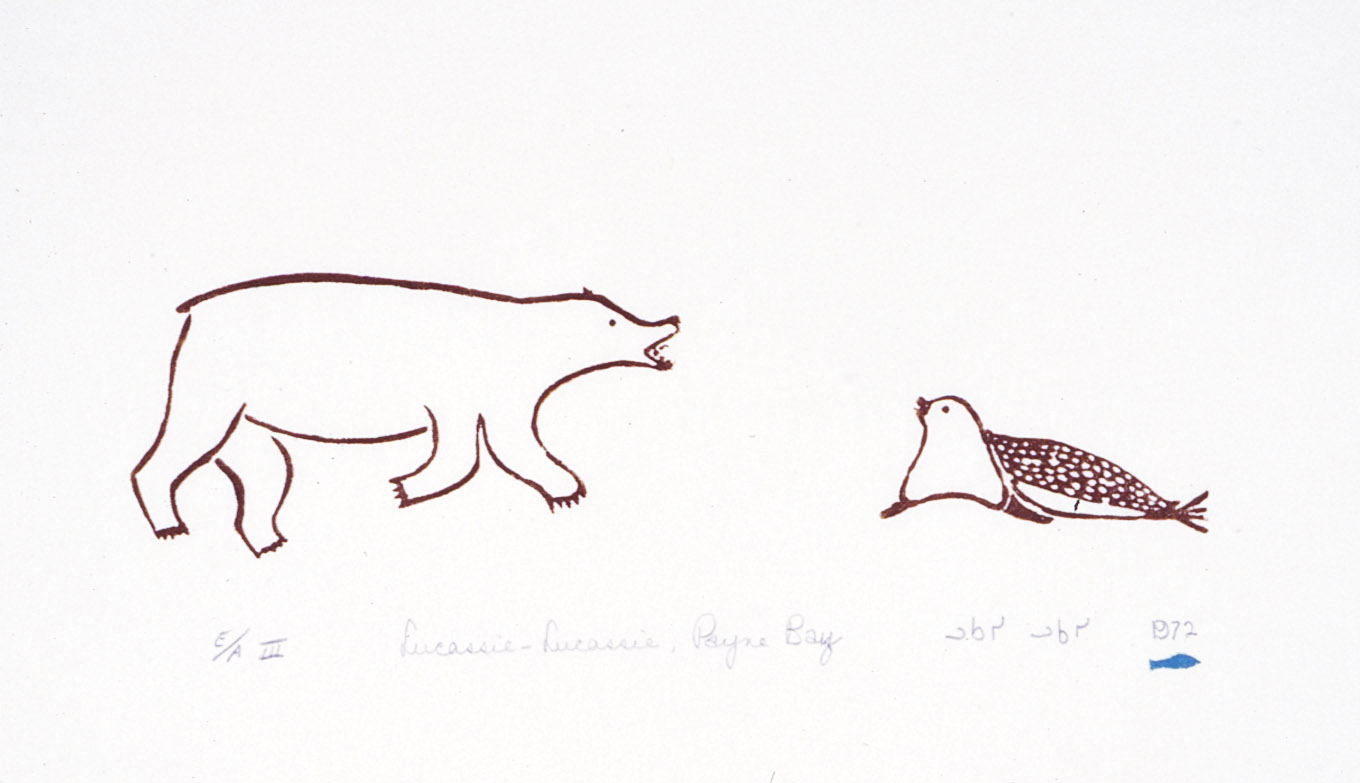
Prints offer the opportunity to explore polar bears in new ways, establishing narratives that shape and alter the perception of both what bears are capable of and how their relationship with Inuit has developed and continues to change.
Peaceful or peeved, hunter or hunted, in these prints Inuit artists have illustrated their kinship with polar bears, the capacity they have for family and affection, and the fundamental role they play as the Arctic’s apex land predator. In short, the ways in which they are both like humans and not.
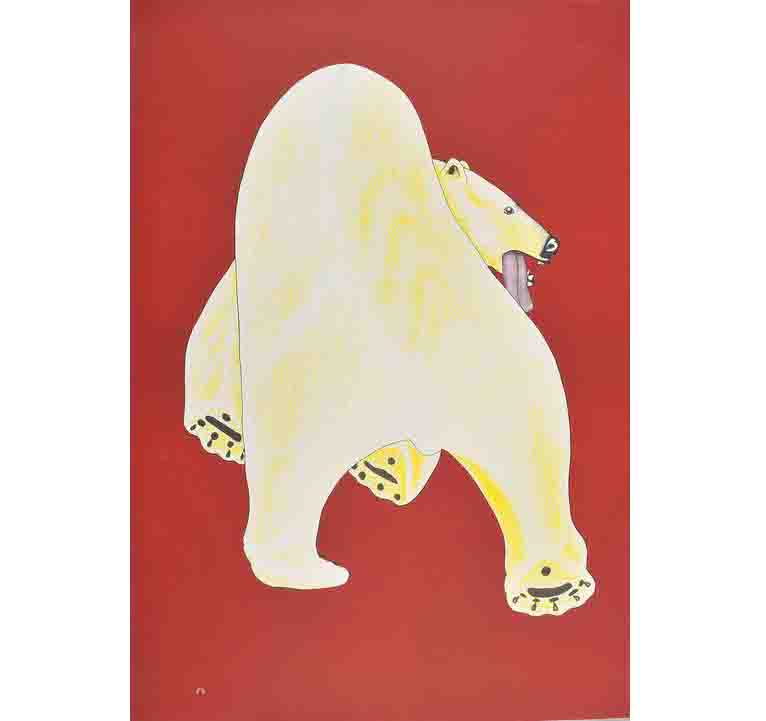
The lolling tongue and lumbering gait of Kananginak Pootoogook’s Angujjuaq (Great Big Bear) puts me in mind of an enormous dog exhausted after a long walk. But the watchful eyes on this giant belie this benign appearance, revealing a predator on the hunt for its next meal.

Attitude is everything! The body language in this seemingly simple line drawing by Lucassie Lucassie has a polar bear advancing on a seal, teeth bared. The seal, on the other hand, looks both frightened and like it is going to try to hold its ground against the apex land predator in its ecosystem. How do you think that will turn out?
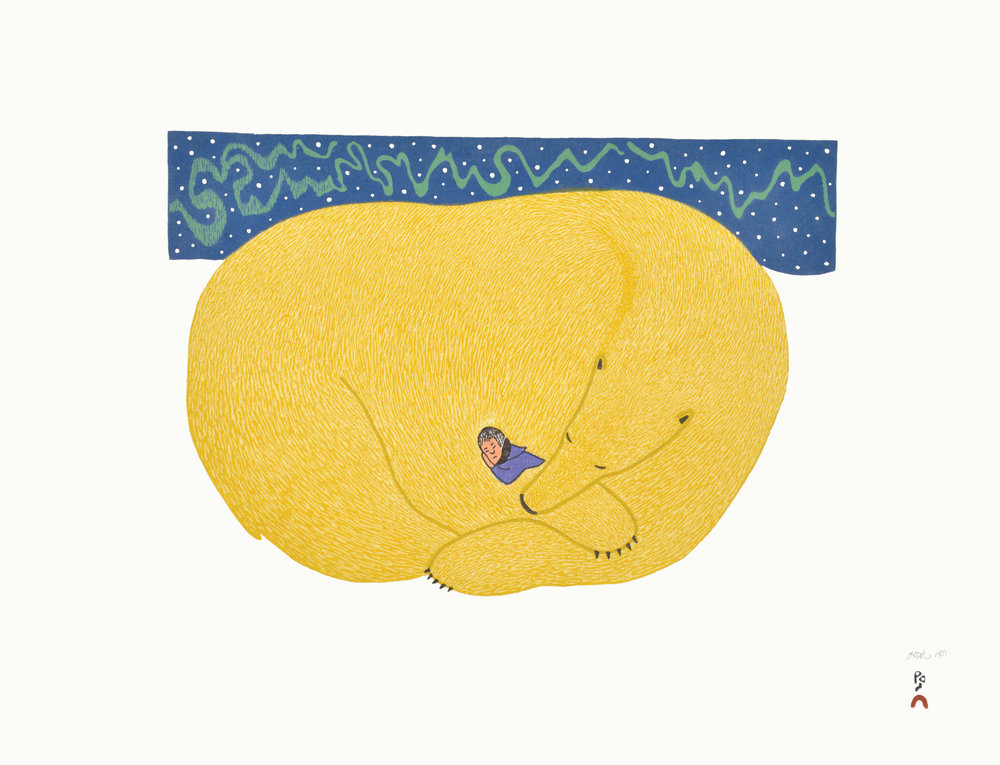
Cuddled up together, a bear and a human sleep soundly under the northern lights. Ningiukulu Teevee shows her version of an interspecies adoption, softening a predator into a cuddly member of the family to one lucky human.
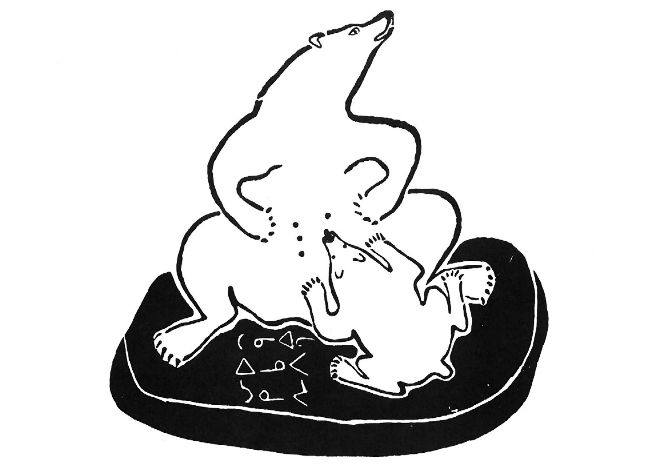
An almost domestic scene, Daniel Inukpuk’s mother bear feeds her cub, sitting up on what is likely a slab of rock or ice. Rendered with curvy sides, the surface becomes almost pillowy, turning the bears into any other mother and child pair at feeding time.
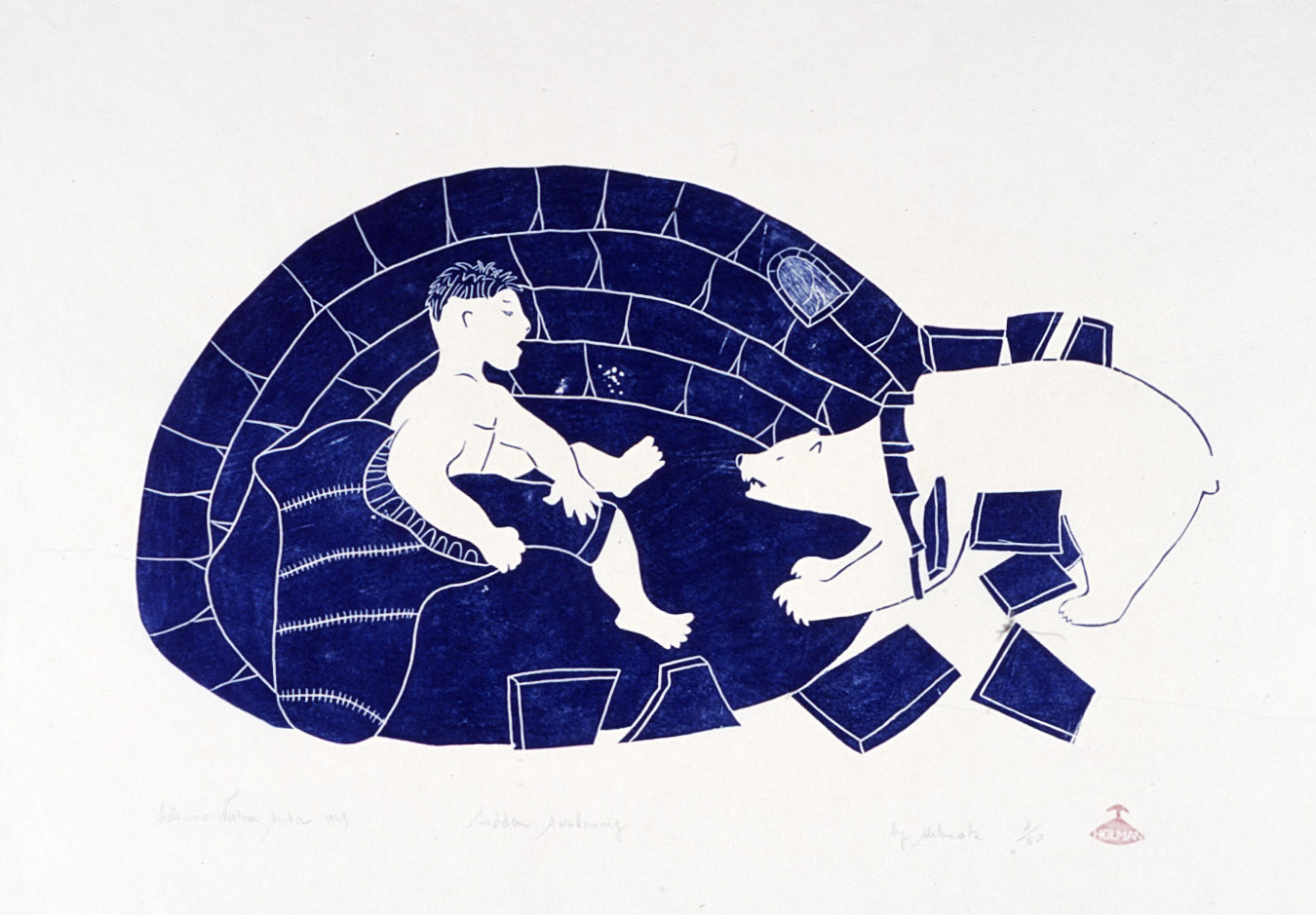
Sudden awakening is right! Peter Aliknak Banksland has put a humorous spin on what in real life would be terrifying: waking up face-to-face with a giant polar bear. The flailing legs and bare chest of the man illustrate just how unprepared he was to confront a predator in his home, while the scattered ice blocks at the entrance to the iglu show how determined the bear was to get to him.


